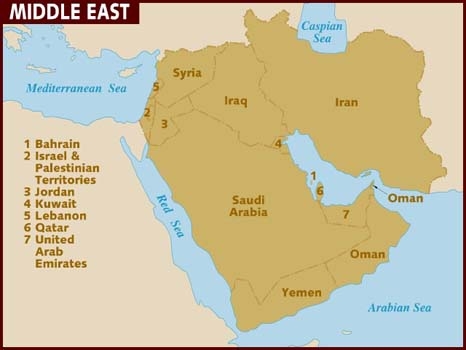Middle East countries aim for greater share of $168 billion outbound Chinese travel market

By ATM Team —
London :Tourism professionals across the Middle East are furthering their efforts to increase their share of the $168 billion global outbound Chinese tourism market, through a number of travel incentives.
With 120 million outbound travellers in 2016 alone, China has retained its position as the world’s largest outbound tourism market for the past four years, according to data released ahead of ATM, taking place at Dubai World Trade Centre from 24 – 27 April 2017.
Simon Press, Senior Exhibition Director, ATM, said: “It’s crucial that tourist hubs throughout the Middle East maximise their reach into mega-markets such as China. Demand cycles, budget trends, tech-savvy hotels, food and beverage, sightseeing, culture and heritage centres, can easily be met in many key destinations across the region.”
A number of travel incentives introduced into the region over recent months include visas on arrival for Chinese nationals visiting Qatar and the UAE. The private sector is also employing more Cantonese and Mandarin speaking staff to help ease the language barrier and more Chinese businesses are operating their Middle East and Africa operations from the UAE.
“With 4,000 mostly Chinese outlets, Dragon Mart retail centre in Dubai, is a fine example of this,” added Press.
Initiatives such as the Qatar China 2016 Year of Culture have also helped boost the profile of Arab states, with arrivals into Doha from Asia and Oceania totalling 342,976 in the first half of last year.
“There is every reason to believe that China will maintain its position as a top source market, moving forward. Currently 13 Chinese cities, including Beijing, Guangzhou, Shanghai and Shenzhen, as well as Hong Kong and Taipei, are connected to Dubai with more than 100 weekly flights,” said Press.
According to the International Monetary Fund (IMF), China is the second largest global economy, worth $11.3 trillion, and its outbound tourism market was valued at $168 billion globally in 2016, with 59.3 million Chinese nationals travelling abroad in the first half of 2016 and 62 million in the second half, according to a report by Thomson Reuters, an increase of around 4% year-on-year.
In Abu Dhabi, plans to attract 600,000 Chinese tourists a year by 2021, if realised, would represent a 265% increase on the figures recorded for the first nine months of 2016, according to data from the emirate’s Tourism and Culture Authority.
In Dubai, 540,000 tourists arrived from China in 2016, up from 450,000 in 2015, cementing the country’s place as a top 10 source market for the emirate. Elsewhere, the Sharjah Commerce and Tourism Development Authority (SCTDA) is preparing to welcome as many as 200,000 Chinese visitors to the emirate by 2021.
Looking at inbound visitors from the Middle East into China, the Asian giant’s presence in the ATM country zones will not go unnoticed as it prepares to showcase its travel and hotel brands in both the hospitality and technology areas of the show.
Exhibiting for the first time at this year’s event is China National Tourist Board, while The Garden Hotel Company Ltd, Guangzhou returns. Among the others already signed up is start-up aggregator PKFARE, which aims to be one of the largest online B2B marketplaces in the industry. PKFARE was a first-time exhibitor at WTM London in November 2016, following which representatives signed commercial agreements with four new partners.
Established in 2014, PKFARE allows agents to book air tickets and hotels around the world, with links to consolidators, hotels and global distribution systems such as Amadeus, Sabre and Travelport.- WIM News
February 2017















